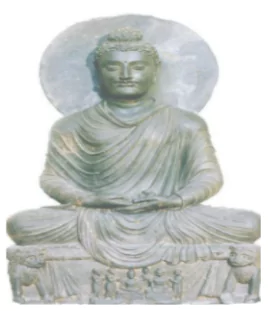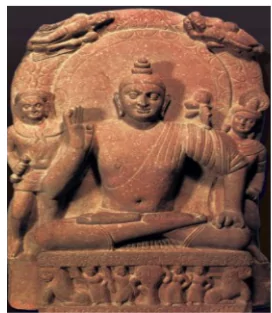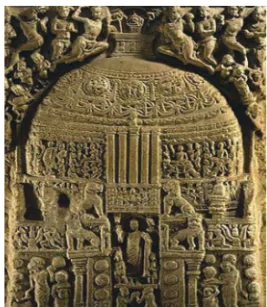Introduction
The different schools of art including Gandhara, Mathura, and Amaravati schools flourished in ancient India, each with distinct styles, materials, and cultural influences, contributing significantly to the nation’s artistic heritage.
| DIMENSIONS |
GANDHARA SCHOOL |
MATHURA SCHOOL |
AMARAVATI SCHOOL |
| External Influences |
|
- Purely indigenous. Modelled on the lines of earlier Yaksha images found during the Mauryan period.
|
|
| Religious influence |
|
- Hinduism, Buddhism and Jainism. Images from Vaishnava and Shaiva faiths are also found.
|
- Religious and secular images, but the main theme includes the life stories of Buddha and the jatakas.
|
| Material used |
- Bluish-grey sandstone and Grey sandstone.
|
|
|
| Patronage |
|
|
|
| Area of Development |
- North West frontier including locations like Taxila, Peshawar, Begram and Bamiyan.
|
- Flourished on the banks of river Yamuna.
|
- Developed in the Krishna- Godavari Valley. [UPSC 2021]
- Notable sites: Amravati, Goli, Vengi, Nagarjunikonda, and Ghantasala.
|
| Features of Buddha sculpture |
- Spiritual Buddha
- Wavy hair
- Less ornamentation
- Long ears and long forehead
- Buddha in Yogi posture with eyes half closed.
- Protuberance on the head signifying the omniscience of Buddha.
- Halo around the head of Lord Buddha
|
- Delighted Buddha
- Face muscular and energetic.
- Buddha seated in Padmasana surrounded by two Bodhisattvas- Padmapani and Vajrapani.
- Protuberance similar to that of Gandhara image.
- Halo around the head of Buddha decorated with geometrical patterns.
|
- Less emphasis on individual features of Buddha.
- The sculptures generally depict the life stories of Buddha and the Jataka tales.
- Other sculptures: taming of Nalagiri (mad elephant) and the presentation of Prince Rahul to his father, the Buddha.
|
|
 |
 |
 |
Amaravati Stupa
- Like the Sanchi Stupa, the Amaravati Stupa also has a Pradakshinapatha enclosed within a vedika.
- The domical stupa structure is covered with relief stupa sculptural slabs, which is a unique feature.
- Though in the Amaravati Stupa there is evidence of construction activity in the third century BC, it was best developed in the first and second centuries AD.
|
- Vengi in Andhra Pradesh has many stupa sites like Jagayyapetta, Amaravati, Bhattiprolu, Nagarjunkonda, Goli, etc. Amaravati has a mahachaitya.
- Buddha images are found in different schools of art like Amaravati, Nagarjunakonda and Guntapalle in Andhra Pradesh. (Guntapalle is a rock-cut cave site near Eluru).
- Rock-cut stupas have been excavated in Anakapalle near Visakhapatnam.
- In Karnataka, Sannati in Gulbarga district is the largest stupa site excavated so far.
Enroll now for UPSC Online Course
Conclusion
- The different schools of art including the Gandhara school excelled in Greco-Roman influences, Mathura showcased indigenous Indian themes, while Amaravati emphasized intricate relief sculptures, collectively reflecting India’s rich artistic diversity and historical context.
![]() April 18, 2024
April 18, 2024
![]() 9429
9429
![]() 0
0


